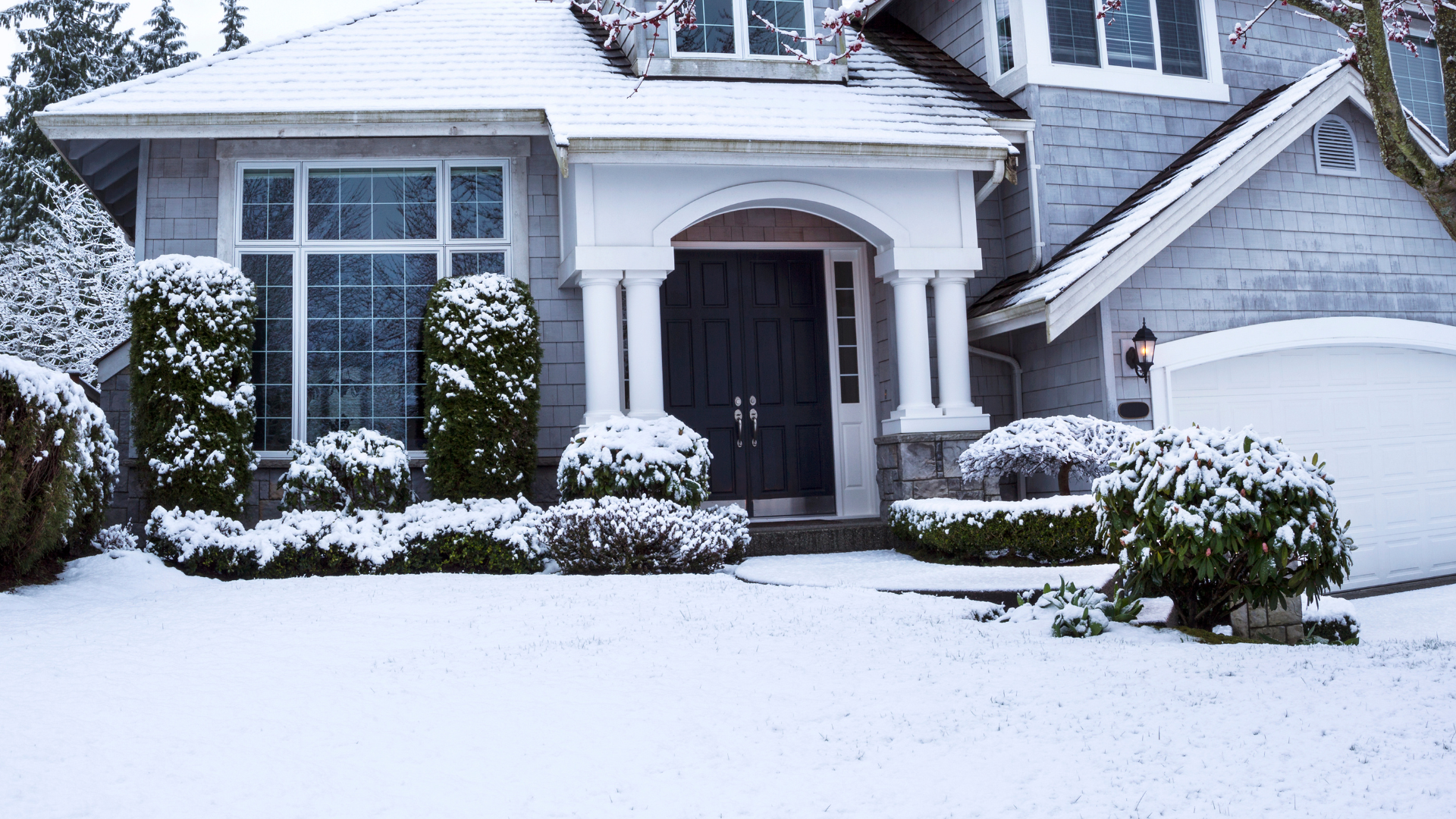By Joey Perry
•
January 6, 2025
How Winter Affects Your Landscape's Drainage: Signs You Need to Improve Your Yard's Flow As winter settles in, your landscape faces a number of challenges that can affect the drainage of your yard. Snow, ice, and rain can create issues that might go unnoticed until the spring thaw. Winter drainage problems, if left unaddressed, can lead to water pooling in your yard, erosion, and even damage to your plants and hardscaping. At DRLscape LLC , we understand the importance of maintaining proper drainage year-round. In this blog post, we’ll explore how winter weather can affect your landscape’s drainage and highlight signs that your yard may need some attention before the warmer months arrive. How Winter Weather Impacts Drainage Winter introduces several factors that can complicate drainage in your yard: Frozen Ground : When the ground freezes, water can't penetrate the soil. As a result, any precipitation—whether from snow, rain, or melting ice—sits on top of the ground instead of being absorbed. This can lead to pooling water or soggy spots in your yard. Snow and Ice Accumulation : During winter storms, snow and ice build up in your yard. When they start to melt, the runoff can overwhelm your drainage system, particularly if it’s already clogged or ineffective. This can result in water pooling near your foundation, on paths, or in low-lying areas of your landscape. Clogged Gutters and Downspouts : Winter precipitation can cause leaves, dirt, and other debris to clog your gutters, blocking the natural flow of water off your roof. Without proper drainage, water can spill over the sides, causing erosion or even damaging your roof and walls. Signs You Need to Improve Your Yard's Drainage Proper drainage is essential for the health of your lawn, plants, and landscape features. Here are some signs that your landscape’s drainage system might need an upgrade before the spring thaw: Pooling Water in Low Spots After a heavy snow or rain, check for areas in your yard where water seems to pool or collect. These low spots may be more noticeable in the winter when the ground is frozen, and water has nowhere to go. Pooling water is a clear sign that your yard's drainage isn’t functioning properly, and it can lead to more serious issues, such as soggy patches in the spring or even foundation damage if left unchecked. Erosion Near Foundation or Walkways Erosion is a common result of poor drainage. If water is not directed away from your home’s foundation, it can erode the soil and cause the ground around your foundation or walkways to wash away. This could lead to cracks in your foundation or sunken paths, which will only worsen as the spring thaw brings more water. Water Running Toward Your Foundation If water is running toward your home’s foundation instead of away from it, you have a serious drainage issue. This is especially evident in winter when ice or snow melt can create rivers of water that may accumulate around the base of your house. Over time, this can lead to water damage, mold, and foundation problems. This can also cause structural issues that can be costly to repair. Damp or Soggy Lawn A healthy lawn needs good drainage to thrive. If your lawn is soggy or constantly damp throughout the winter, it’s a sign that water isn’t draining as it should. This can result from compacted soil, poor grading, or clogged drainage systems. Over time, this excess water can suffocate grass roots, causing patches of dead or unhealthy grass once spring arrives. Clogged Gutters and Downspouts Gutters and downspouts are essential for directing water away from your home, but they can easily become clogged with leaves, twigs, and debris during the fall. If not cleared before winter, these clogs can cause water to overflow, leading to ice dams, roof leaks, and water pooling around the base of your house. It's a good idea to inspect your gutters regularly during the winter to make sure they are clear of debris. How to Address Drainage Issues Before the Spring Thaw If you’ve noticed any of these signs, it’s important to take action before the spring thaw arrives. Here are some steps you can take to improve your landscape’s drainage and prevent future problems: Clear Your Gutters and Downspouts Begin by cleaning your gutters and downspouts to ensure that they can effectively channel water away from your home. Consider installing gutter guards to prevent future clogs. Properly functioning gutters are crucial in keeping water from overflowing and causing damage to your home and landscape. Regrade Your Yard Grading is one of the most effective ways to improve drainage. By adjusting the slope of your yard, you can direct water away from your foundation and toward designated drainage areas. This process helps prevent water from pooling in low spots and reduces the risk of erosion. Regrading may require the help of a professional landscaper to ensure the correct slope and proper drainage paths. Install a French Drain or Dry Well If you have areas where water regularly collects, consider installing a French drain or dry well . A French drain is a trench filled with gravel and a perforated pipe that channels water away from problem areas. A dry well is a large underground container that collects excess water and allows it to slowly percolate into the surrounding soil. Both options help keep your landscape dry and healthy, even during the wettest seasons. Aerate Your Lawn Aerating your lawn in the fall or winter allows water to penetrate the soil more effectively, reducing surface water runoff. Aeration also helps reduce soil compaction, which is often a major cause of poor drainage. It’s an easy and cost-effective solution for improving the overall health of your lawn. Address Low Spots with Soil Fill Low spots in your yard can be filled with additional soil or raised beds to prevent water from collecting. This not only improves drainage but also gives you the opportunity to enhance your landscape with new planting areas that will thrive in the spring. Check Your Irrigation System If you have an irrigation system, it’s essential to make sure it’s working properly. Sometimes, sprinklers can get clogged, or pipes can freeze and burst. Check your irrigation lines to make sure they are functioning well and make any necessary repairs. Winter is the perfect time to assess your landscape’s drainage system and address any issues before they become bigger problems in the spring. By taking a proactive approach to your yard’s drainage now, you can avoid costly repairs and ensure your landscape remains healthy and vibrant as the seasons change. At DRLscape LLC , we specialize in landscape drainage solutions that are tailored to your property’s needs. If you're experiencing drainage issues or would like to discuss ways to improve your yard’s flow, contact us today to schedule a consultation. Let’s make sure your landscape is ready for a healthy, beautiful spring!




